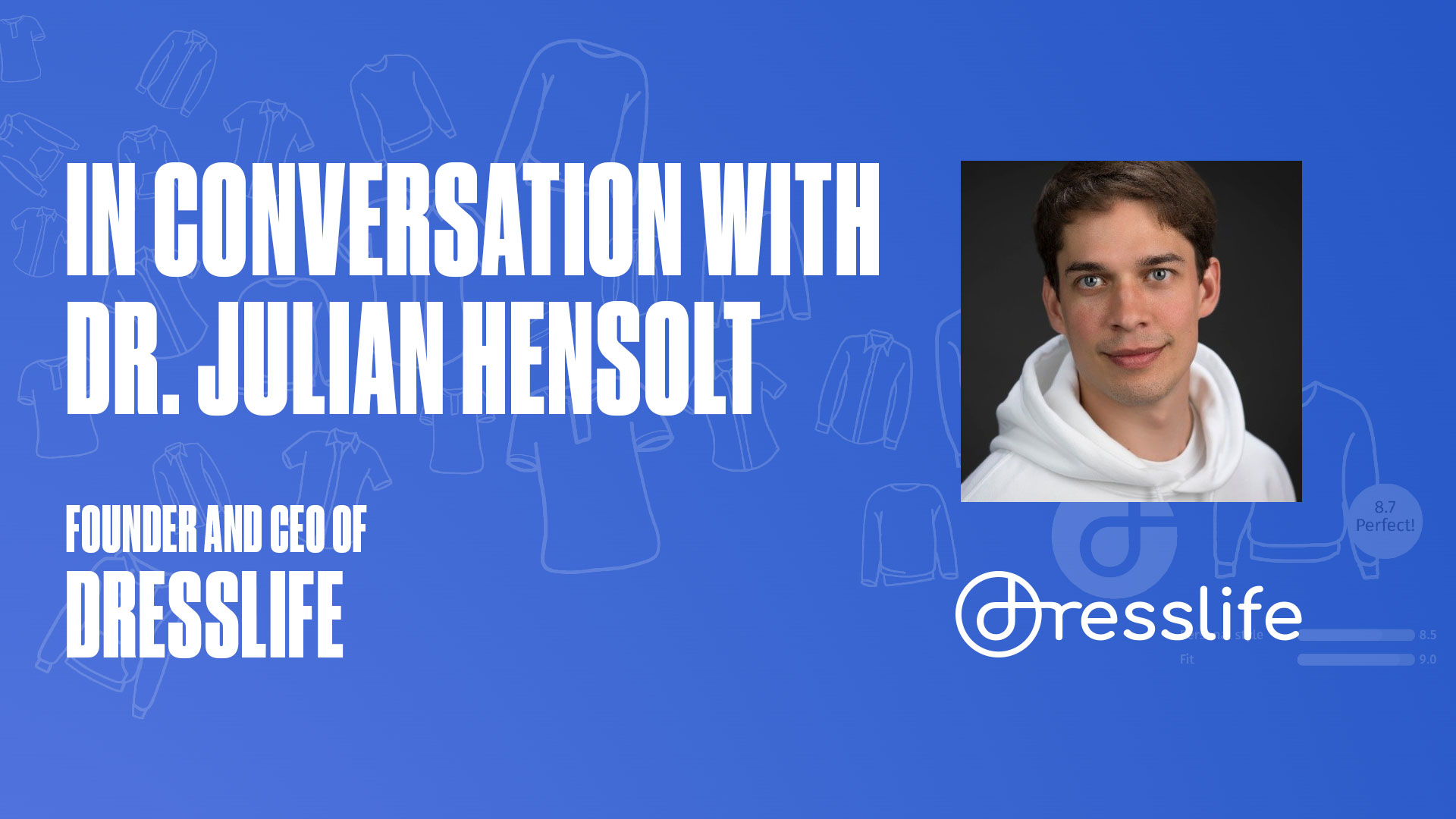
“We’re Not Just Fixing Fashion’s Filters, We’re Rewiring the Logic”
An interview with Julian Hensolt, Founder & CEO of Dresslife
In Hanover, Germany, inside a company built with the rigour of automotive precision and the imagination of fashion tech, Julian Hensolt is solving a problem most consumers don’t even realise exists.
Dresslife, the AI personalisation company he co-founded, isn’t trying to reinvent clothing. It’s focused on something even harder: helping fashion retailers show the right product to the right person, at the exact right moment. With conversions lagging, return rates soaring, and customer patience shrinking, Dresslife’s mission feels timely.
And as Julian tells it, the problem is much deeper than poor filters or broken recommendation engines.
“In some ways - fashion operates like it’s still 100 years ago”
Julian didn’t come from fashion. He spent over a decade at Mercedes-Benz in supply chain management, and then through his PhD started exploring how modern supply chain approaches could be applied to fashion. It was there, he says, that the limitations became obvious.
“Fashion is full of incredibly smart people, but the systems they use aren’t built for efficiency. You’ve got overproduction, understocking, and crazy return rates, all because the model was primarily designed for fast cycles and less on efficiency.”
Unlike cars or appliances, fashion moves fast. Products drop, sell, and vanish before most AI systems can learn from them. Add in the subjectivity of taste, fit, and personal preference, and it’s no surprise the industry struggles to personalise at scale.
So Hensolt set out to build a system that could work.
“Everyone wants relevance, but no one wants friction”
A lot of personalization approaches require the cutomer to provide some inputs like preferences or even body scans.. Dresslife took a different approach.
“We quickly realised that customers are not willing to share any data and its not necessary to model the perfect body,” Julian explains, “It’s to understand what the shopper actually wants. Body shape is just one signal. What really matters is the relationship between what a customer sees, what they expect, and what they’re willing to keep.”
That insight drives Dresslife’s recommendationengine, which combines multiple AI models trained specifically on fashion. One model interprets product attributes. Another understands customer intent. A third interprets preference and fit history. Together, they predict which products each shopper is most likely to buy and keep.
The result is a recommendation layer that works quietly behind the scenes, reshaping the browsing experience without requiring users to input data or change their behaviour.
“Customers won’t jump through hoops,” he says. “They have two to five minutes to shop. If the right product doesn’t appear in the first few scrolls, they’re gone.”
“Recommendation engines were built for books, not blouses”
According to Hensolt, most existing tools fall short because they’re generic.
“They weren’t designed for fashion. They don’t understand that one shirt comes in five different sizes and five different colours. They don’t account for seasonality or the fact that new items drop and disappear every week.”
He offers an analogy: predicting which video game will sell well and to whom is easier, because the product changes slowly and the audience is predictable. Fashion, on the other hand, has sparse data, fast turnover, and personal variation. The AI models Dresslife uses are trained specifically to handle those quirks.
Crucially, they also integrate easily with existing platforms. Retailers don’t have to replace their current systems. They can simply add Dresslife on top—and only pay if it drives measurable results.
“We only win if they win”
That model, where Dresslife only charges if performance improves, is intentional. It reduces the risk for retailers and ensures alignment on outcomes.
“It puts skin in the game,” Hensolt says. “We believe in our product, and we’re willing to stand behind the results.”
For fashion leaders, this could prove to be a turning point. Not only does it improve profits and conversions , mid-term it also supports better planning across the value chain.
“If we know what customers are going to buy and keep, we can eventually inform how much stock to produce, which designs to push, even which items to feature in specific regions.”
“Better predictions, better sustainability”
The link between personalisation and sustainability is clear. If shoppers buy fewer and better items, retailers don’t need to overproduce. Returns drop. Unsold stock reduces. Waste decreases.
“We’re not trying to greenwash. We’re saying, if you solve the core inefficiencies—irrelevant products, wrong sizes, overstock—you make the entire industry more sustainable by default.”
What’s next for Dresslife?
More retailers, more partnerships, and an ambitious plan to scale its AI platform into a full operating system for advanced fashion technologies. One that supports decision-making across the entire value chain, from design to distribution.
“The goal is to build a smarter infrastructure for fashion,” Julian says. “Because in the end, showing the right product at the right time benefits everyone—the shopper, the brand, and the planet.”
To learn more about DressLife, visit dresslife.com. For partnerships or introductions, contact the team via their website.